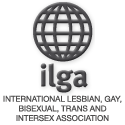The embarrassment over the trend for rainbow flags on cars in Kabul reminds us how far Afghanistan is from the liberal west
If you are gay and proud, Afghanistan is quite likely the last place on earth to show it publicly. How, then, are we supposed to make sense of the recent very conspicuous appearance of the rainbow-coloured gay pride symbols all over the streets of Kabul and other urban centres?
The pioneer Afghan Pajhwok news agency took it upon itself to investigate this unusual sociocultural phenomenon, sending a reporter to interview drivers who had decorated their cars with gay pride stickers and rear banners. After all, these Chinese-made car accessories had suddenly become popular, available in any garage supplying vehicle parts.
Even more remarkably, Afghan drivers seemed to have little concern about using their cars to openly advertise being gay and proud of it. In a country where social conservatism sometimes results in gay men sharing their life with their partner of choice and an arranged wife so as to keep up appearances, there was certainly something very unusual about this apparently new openness.
Needless to say, Pajhwok’s reporter soon discovered that Afghans who had decorated their cars with the rainbow symbol had no idea what it stood for. For them it was just the newest car fashion accessory but, on learning of its meaning in the west, drivers immediately started removing it.
The rainbow stickers had first arrived on secondhand cars imported from Canada. Afghans had simply assumed that the colour combination was the latest fashion fad in the west, and duly adopted it.
Had it not been for the news agency’s interest, the gay pride symbol would have continued to flourish in Afghanistan. Uprooted from its original cultural environment and landing in the country by sheer accident, it would have led an existence devoid of any meaning aside from showing that, like everywhere else in the world, Afghan men loved their cars.
But since Afghanistan is no longer an isolated country, imported symbols are bound to be recognised and decoded not only by globetrotting members of the middle class but also the many expatriate internationals and returnee Afghans. Once informed about the symbol’s meaning, the stickers were removed en mass. One commentator even expressed the hope that the embarrassing incident would serve as cautionary tale, warning Afghans against their tendency to blindly follow fashions imported from elsewhere.
The confusion that had allowed for the gay-pride car accessories to become coveted goods in Afghan garages is not restricted to the symbol itself. Judging by the way homosexuality is debated in the public sphere, the term itself is understood incorrectly.
It is usually used as a synonym for what would be described in Europe and North America as paedophilia. Hence, on the rare occasions when Afghan writers dare to publicly tackle problems related to sexuality, we encounter the local terms hamjins baazi (homosexuality) and bacha baazi (paedophilia) used interchangeably, as if they both deal with the same phenomenon.
There seems to be little awareness of the fact that in liberal democracies of the west the term strictly refers to relationships between consenting adults.
Given that Afghanistan is an exceedingly conservative society, it is astonishing that articles openly discussing homosexuality actually exist. The content of such articles is often surprising. Hence, in what – by Afghan standards – is a frank and almost judgment-free article, one writer establishes that it is the country’s social conditions that contribute to unorthodox practices. Blaming strict gender segregation, the author points out that since desire is natural to humankind, its suppression is bound to make it resurface in a different guise: “For example, monks and those who renounce worldly pleasures quite often tend to be fat, with big bellies. Their desire has resurfaced as greed for food.”
Following this rather strange line of argument, the reader is then confronted with a bizarre assessment: if necessary, relations with underage persons should be conducted with girls rather than boys because even if they are physically immature, the female anatomy still renders girls more natural partners.
A recurrent theme in all such debates is a juxtaposition of European countries’ treatment of the hijab with their attitude towards homosexuality. Authors are genuinely puzzled that France has banned the hijab, which in their view is a religious obligation, but protects the rights of homosexuals – which they say is banned by all religions.
Such articles as a rule make generous use of question marks and exclamation marks. These loud orthographic markers, in turn, echo the profound divide that separates the Afghans’ traditional society from the liberal markets from whence secondhand cars make their journey across continents, sometimes complete with dangerously loaded but misunderstood ornamental accessories.
• This article was amended on 25 May 2011. The original referred to Pajhwak news agency. This misspelling has been corrected.
by Nushin Arbabzadah, guardian.co.uk
Source – The Guardian







